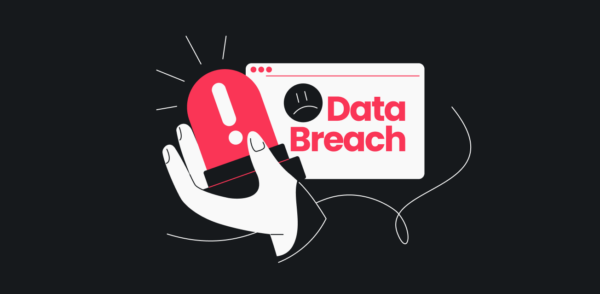Data breach refers to the unauthorized access, retrieval, or disclosure of sensitive or confidential information. It poses a significant threat to individuals, businesses, and organizations, leading to potential financial losses, reputational damage, and legal repercussions. In today’s digital age, where vast amounts of data are stored and transmitted electronically, data breaches have become increasingly prevalent and sophisticated.
Exploring Data Breach
Data breaches can occur through various means, including hacking, malware attacks, insider threats, and accidental exposure. Hackers employ sophisticated techniques such as phishing, ransomware, and brute force attacks to exploit vulnerabilities in systems and networks, gaining access to sensitive data. Malware, including viruses, worms, and Trojans, can infect computers and networks, allowing attackers to steal data or disrupt operations. Insider threats, whether intentional or unintentional, involve employees, contractors, or partners who misuse or mishandle confidential information. Accidental exposure may occur due to human error, misconfigured systems, or inadequate security protocols.
Key Features of Data Breach
- Unauthorized Access: Intruders gain unauthorized access to sensitive data, circumventing security measures.
- Data Theft: Attackers steal confidential information, including personal data, financial records, and intellectual property.
- Reputational Damage: Organizations may suffer reputational damage and loss of trust from customers, partners, and stakeholders.
- Financial Losses: Data breaches can result in significant financial losses, including fines, legal fees, and remediation costs.
- Regulatory Compliance: Organizations may face regulatory penalties for failing to protect sensitive data, violating data protection laws and regulations.
Types of Data Breach
Data breaches can be classified into several types based on the nature of the incident and the compromised data:
| Type of Data Breach | Description |
|---|---|
| Phishing | Attackers use deceptive emails or messages to trick individuals into disclosing sensitive information, such as login credentials or financial details. |
| Malware | Malicious software infects computers or networks, allowing attackers to steal data, disrupt operations, or extort ransom payments. |
| Insider Threat | Employees, contractors, or partners misuse or mishandle confidential information, either intentionally or unintentionally. |
| Accidental Exposure | Human error, misconfigured systems, or inadequate security protocols result in the accidental exposure of sensitive data. |
Utilizing Data Breach
Despite its illicit nature, data breach incidents have been exploited for various purposes:
- Identity Theft: Stolen personal information, such as social security numbers and credit card details, can be used for identity theft and fraud.
- Financial Fraud: Attackers may exploit compromised financial data to commit fraudulent transactions, such as unauthorized purchases or money transfers.
- Corporate Espionage: Competitors or adversaries may target organizations to steal proprietary information, trade secrets, or strategic plans.
- Black Market Trade: Stolen data, including credentials, intellectual property, and sensitive documents, may be sold on underground forums or black market websites.
Challenges and Solutions
Challenges associated with data breaches include:
- Detection and Response: Timely detection and response to data breaches are crucial to minimize the impact and mitigate further damage.
- Data Protection: Implementing robust security measures, such as encryption, access controls, and multi-factor authentication, can help protect sensitive data from unauthorized access.
- Employee Training: Providing comprehensive training and awareness programs to employees can help prevent insider threats and mitigate the risks of human error.
- Regulatory Compliance: Compliance with data protection laws and regulations, such as GDPR, HIPAA, and PCI DSS, is essential to avoid regulatory penalties and maintain trust with stakeholders.
Characteristics and Comparisons
| Data Breach vs. Data Leak |
|---|
| Data Breach refers to unauthorized access, retrieval, or disclosure of sensitive information, often resulting in financial losses and reputational damage. |
| Data Leak involves the unintentional or accidental exposure of sensitive data due to human error, misconfigured systems, or inadequate security protocols. |
Future Perspectives
The future of data breach prevention and mitigation involves advancements in cybersecurity technologies, including:
- Artificial Intelligence: AI-powered solutions can enhance threat detection, automate incident response, and identify anomalous behavior patterns.
- Blockchain Technology: Blockchain-based solutions offer decentralized and immutable data storage, enhancing data integrity and security.
- Zero Trust Architecture: Zero Trust principles advocate for continuous verification and strict access controls, minimizing the risk of unauthorized access and data breaches.
VPN and Data Breach
Virtual Private Networks (VPNs) play a crucial role in protecting against data breaches by encrypting internet traffic, securing connections, and masking IP addresses. By routing traffic through encrypted tunnels, VPNs provide a secure and private communication channel, preventing unauthorized interception and eavesdropping. Additionally, VPNs can help bypass geo-restrictions, enhance anonymity, and safeguard sensitive data, making them an essential tool for individuals and organizations concerned about data security and privacy.
Resources for Further Information
For more information about data breaches and cybersecurity best practices, please refer to the following resources:
- United States Computer Emergency Readiness Team (US-CERT): Provides alerts, tips, and resources to improve cybersecurity posture.
- National Institute of Standards and Technology (NIST): Offers guidelines and standards for cybersecurity risk management and incident response.
- Cybersecurity and Infrastructure Security Agency (CISA): Provides tools, services, and training to enhance cybersecurity resilience and awareness.
These resources offer valuable insights and guidance for individuals and organizations seeking to protect against data breaches and safeguard sensitive information.


